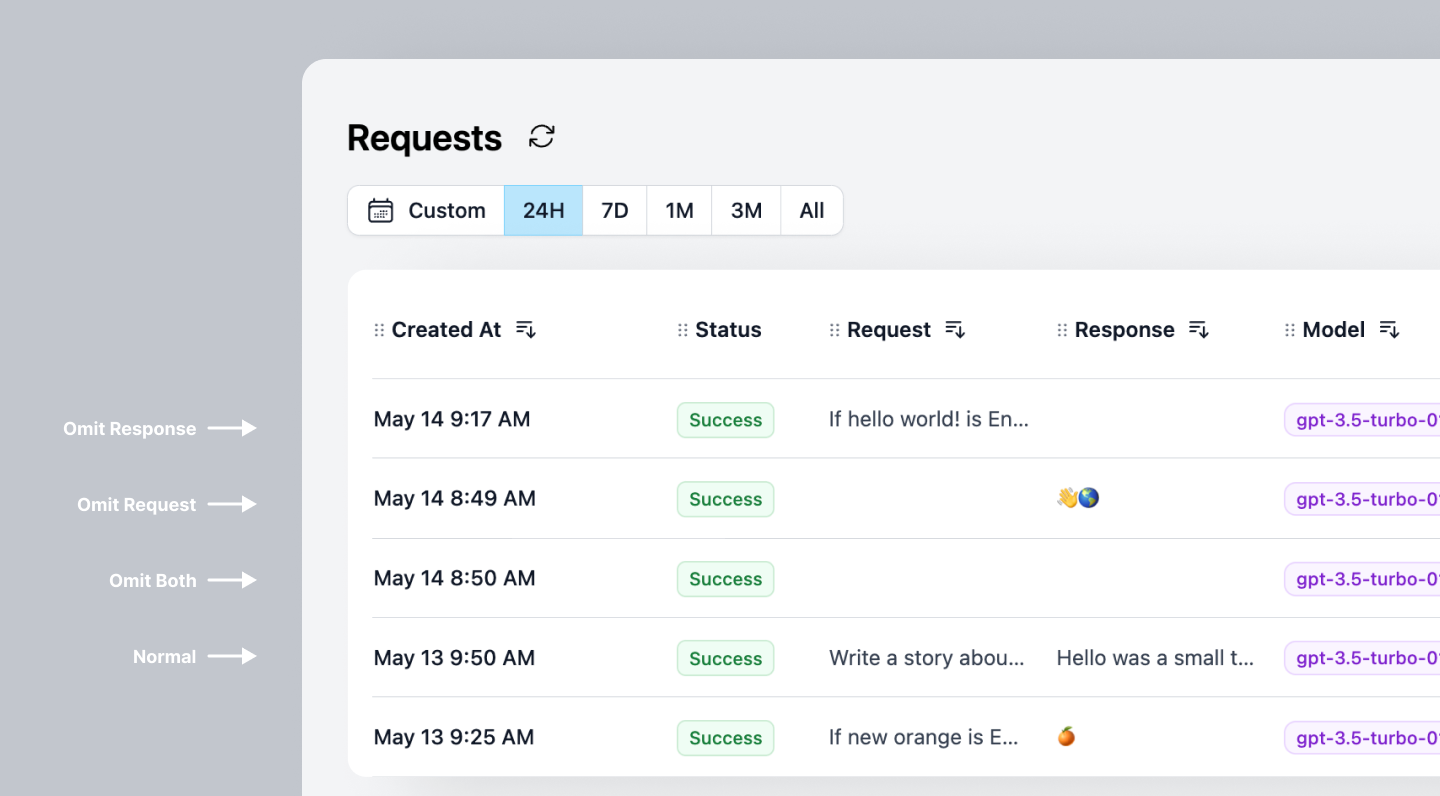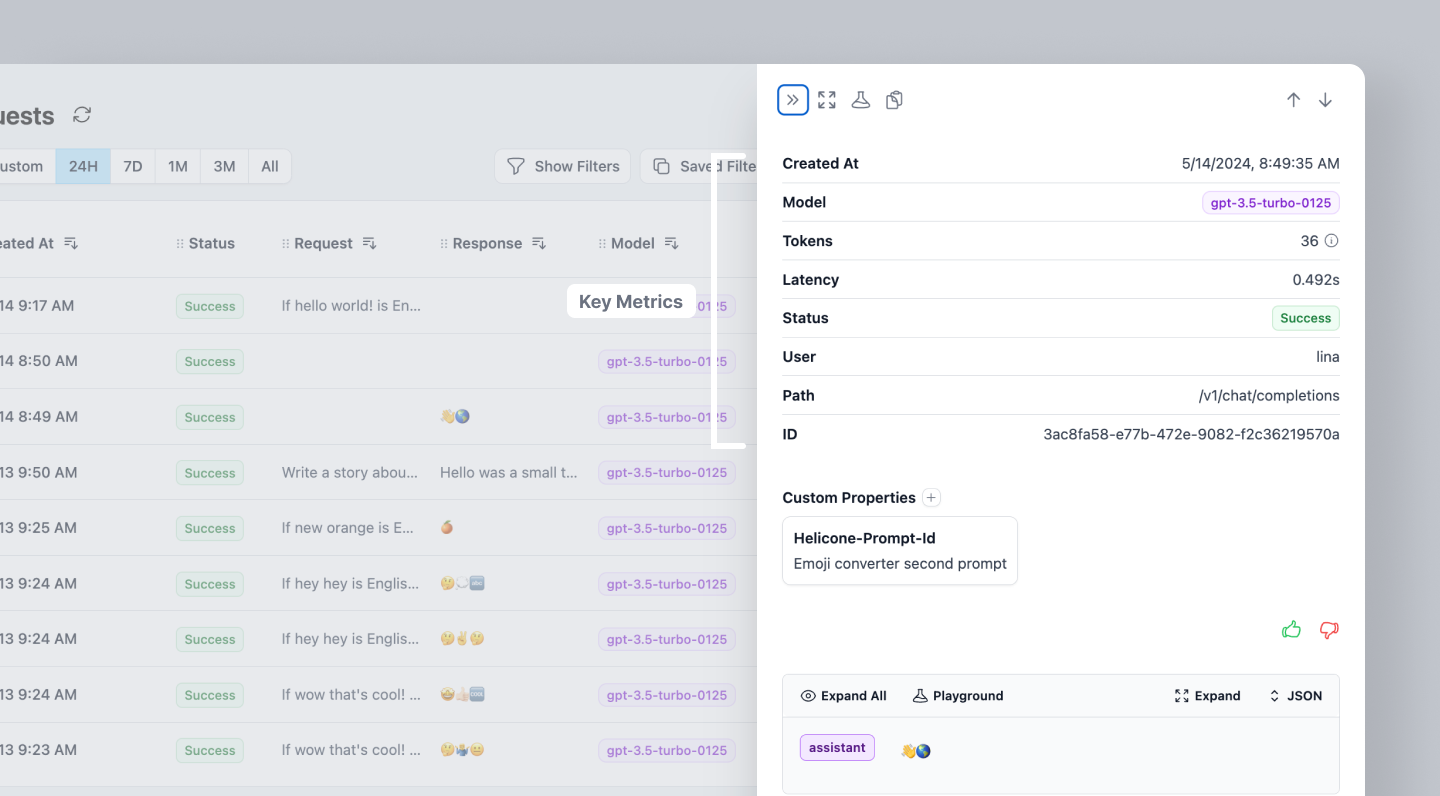
Omit requests, responses or both in your logs.
Why use Omit Logs
- Maintain compliance: Meet GDPR, HIPAA, and other regulatory requirements by excluding sensitive content from logs
- Protect sensitive data: Prevent PII, financial data, or proprietary information from being stored in observability systems
- Keep essential metrics: Still track costs, latency, token usage, and performance without storing actual content
All responses and requests are only stored in memory and never in long-term
storage.
- Headers: Use this if you’re not using Helicone’s Python Asynchronous Logging.
- Helicone Python Async Logging: Use this if you’re using Helicone’s Python Asynchronous Logging and don’t want to send the request or response to our backend.
Headers
Note: This method does not store the request or response but it still
sends it to our backend.
Helicone-Omit-Request to true.
To omit logging responses, set Helicone-Omit-Response to true.
Python Async Logging
If you are using Helicone’s Asynchronous Logging, you have the option to not even send the request or response to our backend.Request View
You can still see the key metrics for each request, without the request or response contents.
Focus on capturing key metrics and ignore the noise of the request and response.
Completely Disabling Logging
If you are using Helicone’s Asynchronous Logging, you can also completely disable all logging to Helicone:disable_content_tracing() which only omits request and response content but still sends other metrics. Note that this feature is only available when using Helicone’s async integration mode and not with the proxy integration.
Request View
You can still see the key metrics for each request, without the request or response contents.Need more help?
Need more help?
Additional questions or feedback? Reach out to
[email protected] or schedule a
call with us.